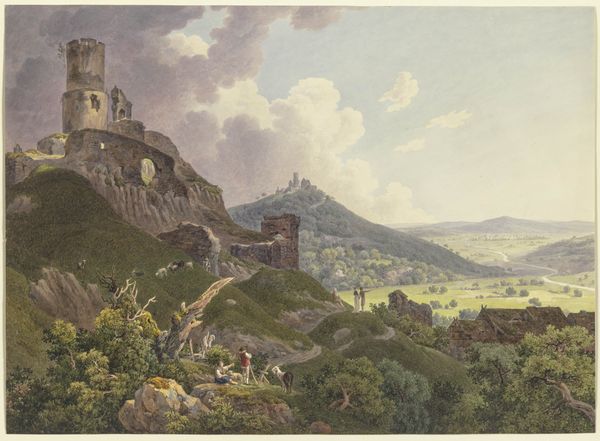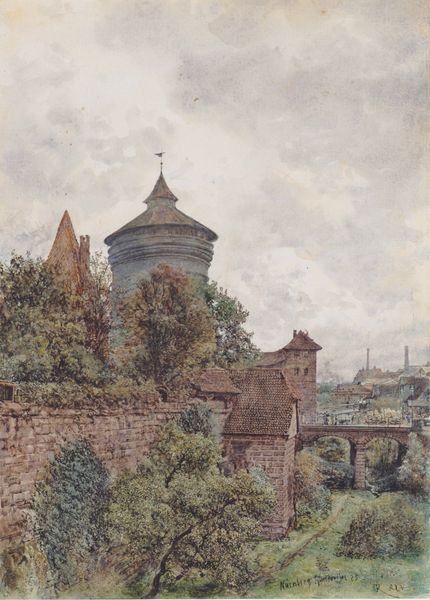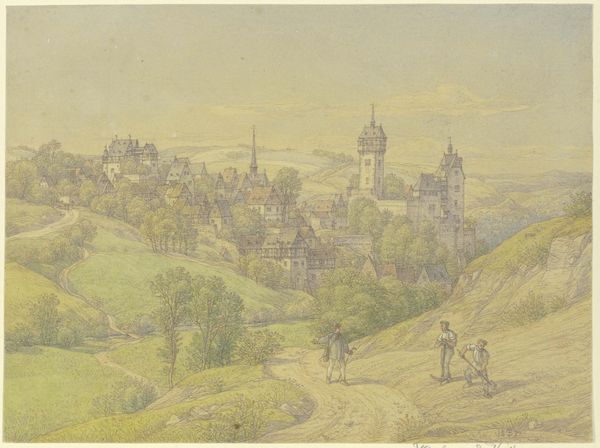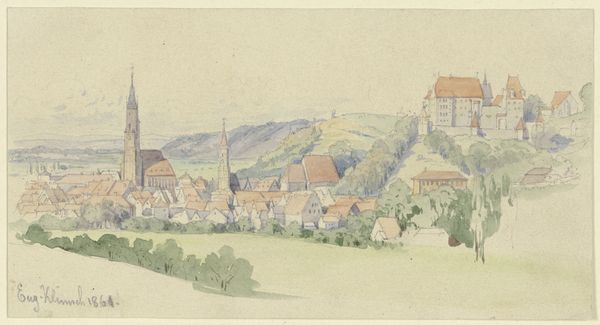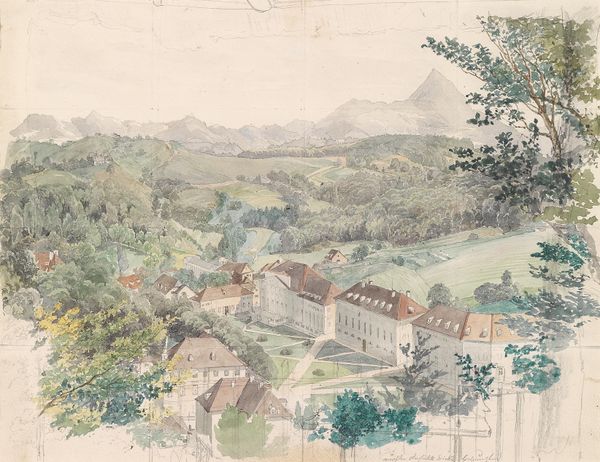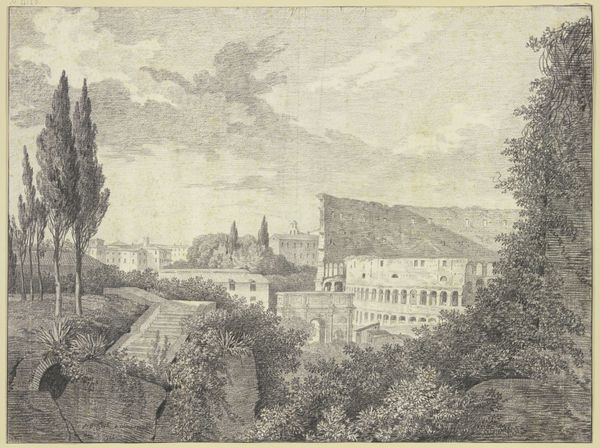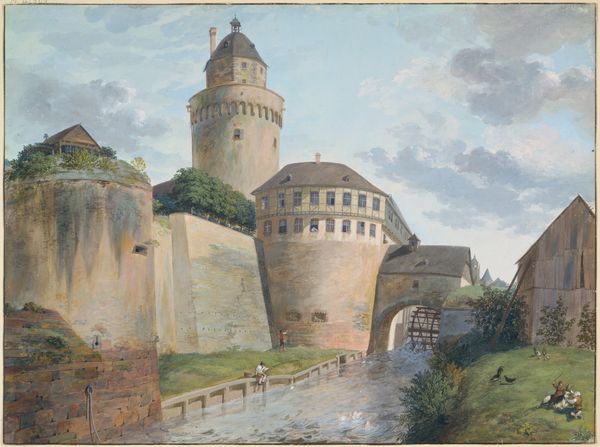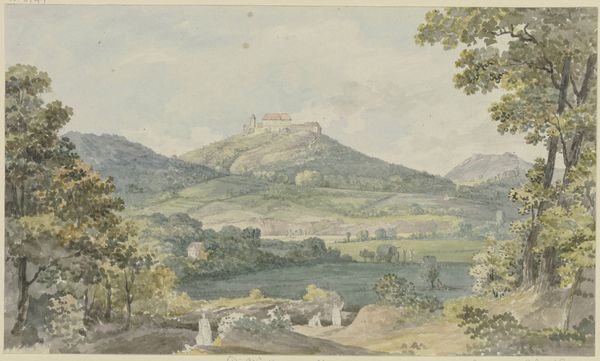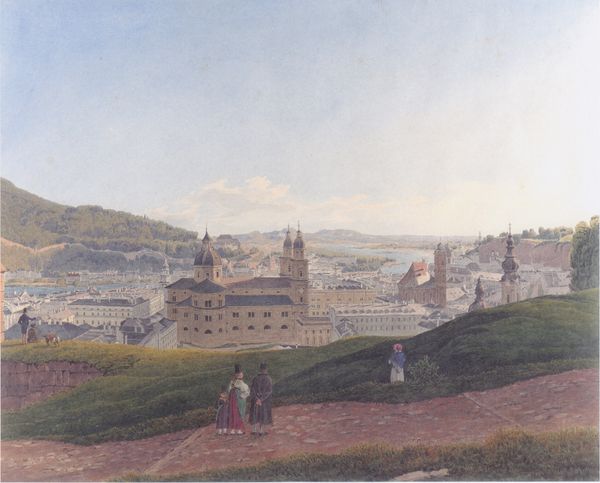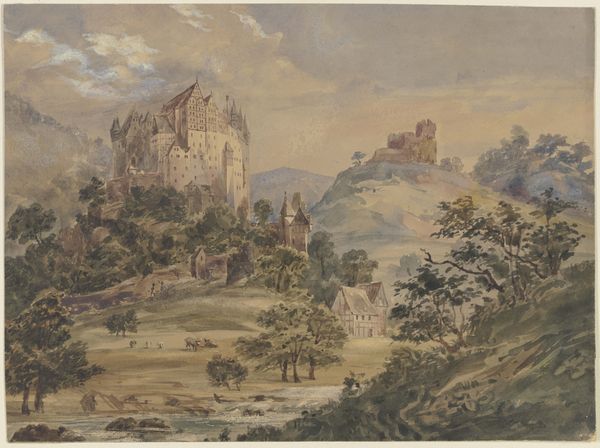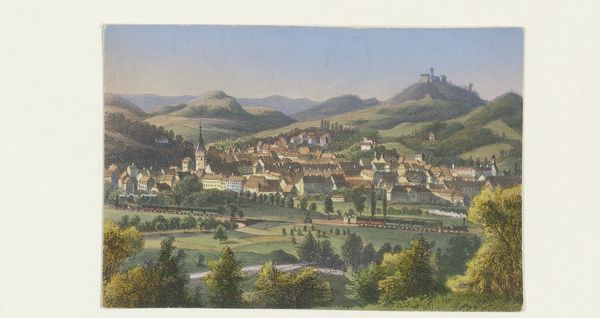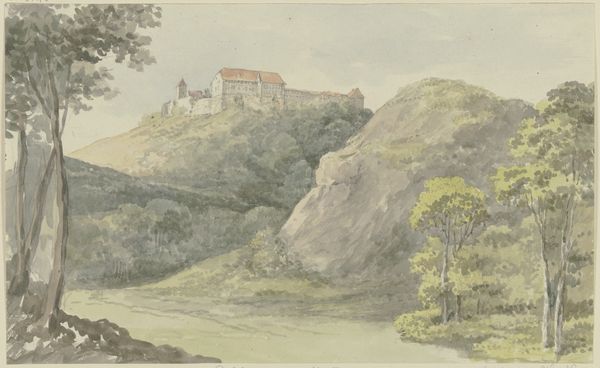
drawing, watercolor
#
drawing
#
landscape
#
watercolor
#
romanticism
Dimensions: overall: 31 x 41.5 cm (12 3/16 x 16 5/16 in.)
Copyright: National Gallery of Art: CC0 1.0
Curator: This is Josef Höger's "Eichhorn Castle at Evening," a watercolor and pencil drawing created around 1838. Editor: There's something wonderfully melancholic about this piece. The soft hues, the imposing castle dominating the hilltop – it all contributes to a sense of fading glory and bygone eras. Curator: Indeed. Höger, working within the Romantic tradition, was deeply interested in capturing not just the physical appearance but also the feeling of a place. He has made use of watercolor to soften and evoke emotion. Note the careful detailing, especially on the castle's facade; however, its very location atop a formidable natural barrier tells a longer story about resource and labor management during castle construction and maintenance. Editor: The castle certainly becomes a dominant symbol of power and perhaps also of protection, even if now slightly dilapidated. Castles represented a way of organizing the medieval world into an intelligible hierarchical social structure, almost a beacon of that feudal structure. The setting itself, a dense forest, feels like a timeless space—a sort of visual metaphor for historical continuity. Curator: Exactly. Consider the watercolor technique as well. Its very nature, that translucence and layering, speaks to fragility, while the underlying pencil work reinforces the intent of precision that reflects an industrial desire. How else would one survey the scene or set the parameters of one's dominion without technical drawing aids? Editor: Fascinating point. Now I also note that a subtle, serpentine path winds its way up to the fortress, beckoning us—the viewers—toward it. Curator: It highlights the connection between those working and travelling the space of the locale at the base with that fortress towering above. A castle cannot thrive without human capital in its construction, staffing, and providing of resources. Höger makes the workers almost integrated into the hillside; how he renders them and their daily routines are not detached from the physical location and labor needed to sustain an entity of dominance such as this one. Editor: Ultimately, the artwork reveals the ways in which symbols and the very physical qualities of creation, water, pencil, and the landscape contribute toward a collective cultural memory. Curator: Absolutely. Reflecting upon the role of landscape and material further enhances one's perspective of the social function of artwork such as Höger's as we consider landscape as a reflection of the needs for industrialism during this time period.
Comments
No comments
Be the first to comment and join the conversation on the ultimate creative platform.
